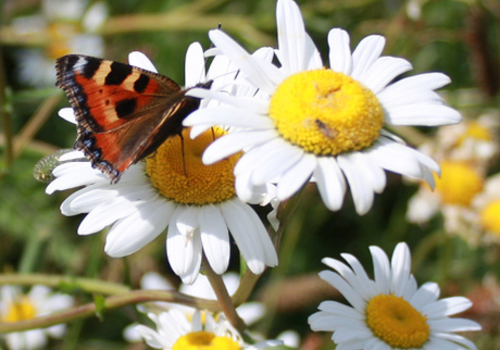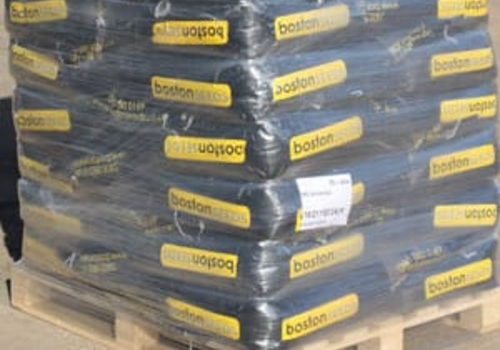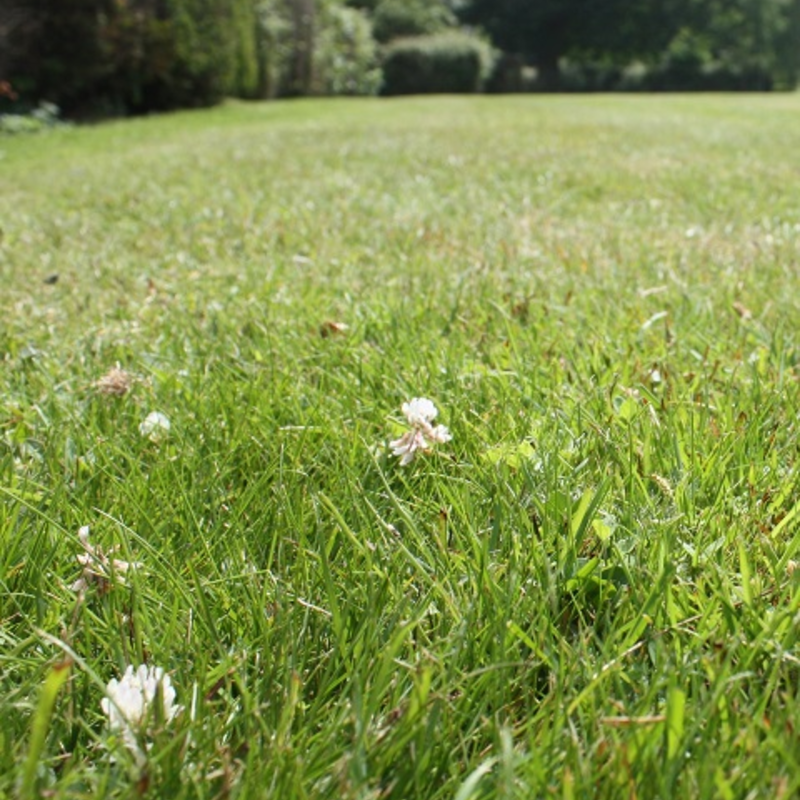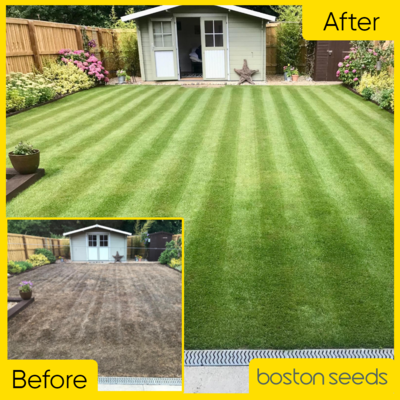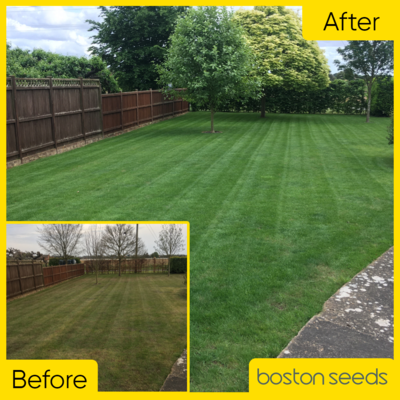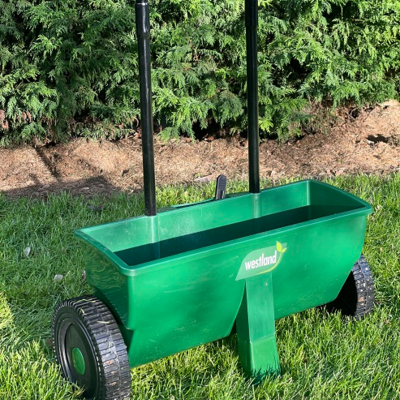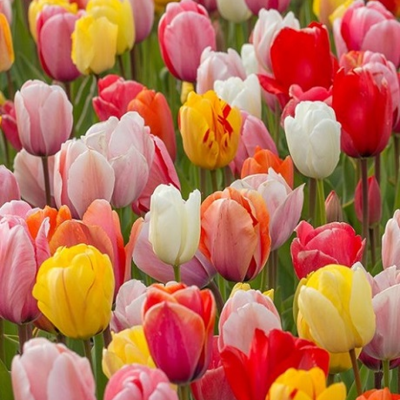BS Eco-Clover Grass Seed
BS Eco-Clover combines high-quality lawn seed cultivars with specialist microclover to create an attractive and hard-wearing lawn or landscape. Microclover reduces the requirement for fertiliser applications and provides additional interest for bees and pollinators if left to grow a little longer. This eco-friendly lawn blend is also designed to stay greener for longer, even in dry conditions, making it a popular low maintenance option for gardeners.
- Microclover naturally provides nitrogen for the grasses.
- Produces an attractive and hard-wearing, dark green turf.
- Drought-tolerant and strong disease resistance.
- Attractive to pollinators if left to grow longer.
- DEFRA-certified for exceptionally high purity and germination.
- Contains: 50% amenity perennial ryegrass, 35% strong creeping red fescue, 12.5% chewings fescue and 2.5% microclover
- Sow at 25-35grams per sq/m - 20kg covers 575-800sq/m
Sowing & Establishment
Ideal Applications & Suitability
BS Eco-Clover is best suited to areas where a balance between appearance and practicality is needed. It’s ideal for domestic gardens, orchard groundcover, communal green spaces, and roadside verges, especially where regular feeding and watering aren’t always possible. If you're looking for a clover lawn that stays green with less intervention, this mix delivers every time.
Clover lawns tend to perform well in full sun and light shade which makes it ideal for most UK gardens. While the grass and micro clover blend can tolerate occasional use, it’s not recommended for high-traffic areas like football pitches or intensively used sports turf. It’s better suited to lawns that are walked on occasionally, rather than regularly pounded.
Whether you’re starting fresh or overseeding an existing clover garden, this mix helps improve coverage, supports better soil health, and offers a low-maintenance alternative to traditional turf. It’s also a solid option for those managing space with sustainability in mind.
How to Sow and Maintain
The best time to sow BS Eco-Clover is in spring (March to May) or early autumn (late August to September), when soil temperatures are mild and moisture levels are more reliable. Start by clearing the area of any weeds or debris, then lightly rake the surface to create a fine, level seedbed.
For a new lawn, sow at a rate of 20g per square metre. If you’re overseeding, you can reduce that to around 10–15g/m², depending on existing coverage. Scatter the seed evenly by hand or use a spreader for larger areas and more even coverage. Once sown, gently press the seed into the soil using a roller or by walking the area as this helps improve seed-to-soil contact without burying it too deeply.
Water regularly during the first two to three weeks, especially during any particularly dry spells. Germination usually takes 7 to 14 days, although it may take a little longer if the nights are cooler. Mow regularly once the clover grass lawn is established and aim to keep the height at around 4–6cm. Leaving it slightly longer allows the micro clover to flower, which adds interest and attracts pollinators.
Avoid high-nitrogen feeds, as this can cause the grass to outcompete the clover in the lawn. If any areas start to thin over time, simply overseed in spring to restore balance.
FAQs
What is a Clover Lawn?
A clover lawn is a blend of both grass and clover seed and is designed to create a dense, low-growing surface that’s easier to care for than traditional turf. The BS Eco-Clover mix uses micro clover, a small-leaf variety of white clover that grows more evenly and blends neatly with fine lawn grasses.
Micro clover has become a popular addition to modern lawns thanks to its practical benefits. Since it fixes nitrogen naturally, this can actually help feed the surrounding grass while reducing the need for fertiliser, making it a popular choice for those after a low maintenance solution. It also grows low and tight to the ground which helps to suppress weeds and reduce bare patches over time.
Unlike standard white clover, micro clover doesn’t dominate or take over. It integrates with the grass naturally to add resilience without sacrificing appearance. It’s a good option for gardeners who want a tidy clover grass lawn with fewer inputs, or for anyone looking to improve soil health and reduce their reliance on chemical feeds.
Why Choose BS Eco-Clover Grass Seed?
BS Eco-Clover is designed for gardeners who want the look and feel of a traditional lawn with fewer inputs and less hassle. By combining top-quality grass cultivars with specialist micro clover, this mix offers the durability of a standard lawn with the added benefits of a nitrogen-fixing groundcover.
It’s ideal for anyone trying to reduce their reliance on fertiliser or cut back on watering, especially during dry spells. The micro clover helps improve soil health over time and keeps the lawn greener for longer, even in less-than-perfect conditions. And because it grows tightly and evenly, it also helps keep lawn weeds under control.
Whether you're creating a clover grass lawn for a domestic garden, a communal green space, or a verge that’s tricky to maintain, this mix is built for resilience. It’s soft underfoot, mowable, and can be left slightly longer to encourage flowering which makes it a good option for wildlife-friendly planting too.
As a guide, the mix contains around 60% grass and 40% clover, with germination typically taking 7–14 days in mild conditions. For best results, aim to mow at around 4–6cm and overseed at 20g per square metre when topping up thin areas.
Is microclover suitable for children or pets?
Yes. A microclover lawn is soft underfoot, safe for play, and holds up well to light use. It's a great choice for family gardens.
Will clover take over my lawn?
No. Microclover integrates well with grass when sown in balance since it stays low and doesn’t dominate like larger-leaf white clover varieties can.
How often should I mow a clover lawn?
You’ll likely mow less often than with a standard lawn. Once established, mowing every 1–2 weeks is usually enough to keep it tidy.
Does a clover lawn attract bees?
Yes. If you let the clover in your lawn flower, it will naturally attract bees and pollinators. Regular mowing will limit flowering if preferred.
Do I need to fertilise a clover lawn?
Not usually. Clover with grass helps feed the lawn by fixing nitrogen, so extra fertiliser is rarely needed unless the soil is very poor.
Can I grow clover in the shade?
Clover grass lawns cope with partial shade, but like most plants, they do best in areas with good light. Dense shade may reduce performance.
Buy With Confidence

